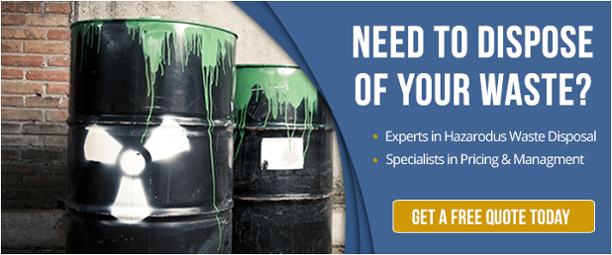Many businesses work with dangerous goods and materials. And, when those businesses transport those goods and materials, either as part of doing business or for disposal, strict regulations govern how that needs to be done.
In an effort to have consistent procedures in place and ensure proper shipping when hazardous materials are transported, the U. S. Department of Transportation developed hazardous material classifications.
The regulations that apply to these classification include labeling, storage and transportation in all modes of transportation – air, highway, rail and water.
These classifications range from Class 1: Explosives to Class 8: Corrosives. The final hazard class is Class 9 Miscellaneous Hazardous Material.
What Is Miscellaneous Hazardous Material?
 The Class 9 category contains all hazardous materials that do not fit one of the classes between 1 and 8. Class 9 materials are defined in 49 CFR 173.140 and include the following:
The Class 9 category contains all hazardous materials that do not fit one of the classes between 1 and 8. Class 9 materials are defined in 49 CFR 173.140 and include the following:
Any material which has an anesthetic, noxious, or other similar property which could cause extreme annoyance or discomfort to a flight crew member so as to prevent the correct performance of assigned duties.
Any material that meets the definition in 49 CFR 171.8 for an elevated temperature material, a hazardous substance, a hazardous waste, or a marine pollutant.
Examples Of Class 9 Hazardous Waste
A miscellaneous hazardous material is a substance or article that presents a hazard during transportation, but does not meet the definition of any other hazard class.
Examples of miscellaneous hazardous materials include, but are not limited to the following:
- Acetaldehyde ammonia
- Ammonium nitrate based fertilizer
- Asbestos
- Aviation regulated liquid, n.o.s.
- Automobile airbags
- Battery-powered equipment
- Battery-powered vehicle
- Benzaldehyde
- Chemical kits
- First aid kits
- Lithium batteries
- Magnetized materials
- Plastic molding compound
- Self-inflating life vests
- Sulfur
Is A Placard Required for Class 9 Materials?
A Class 9 placard is not required for domestic transportation. However, if you are shipping Class 9 hazardous material in bulk packaging, it must be marked with the appropriate identification number displayed. This can be done on either a Class 9 placard, an orange panel, or a white square-on-point (i.e., diamond), which is not considered a placard.
A Class 9 placard is typically used for International transportation. If a portion of the transportation route for an international shipment is to be carried out in the United States, you do not need a Class 9 placard for the U.S. portion of the route.
How Should Class 9 Materials Be Disposed Of?
It is important that all hazardous wastes are disposed of properly. The best way to prevent improper waste disposal is to ensure that all unknown hazardous materials are labeled.
If a container does not correspond to any of the eight specific hazards yet poses certain dangers, it needs to have proper Class 9 labels.
Working with a reputable hazardous waste transport company ensures that you follow all hazardous materials regulations, protect the safety of your employees and protect the surrounding environment.


Comment